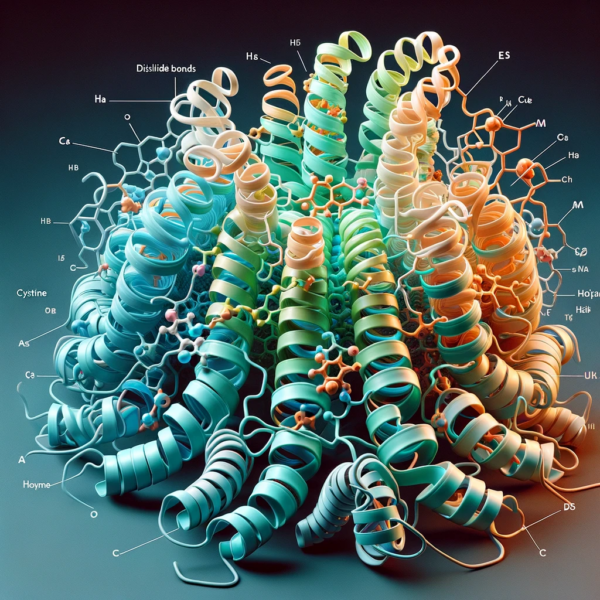The enigma of human evolution is characterized by the reduction of body hair, with thick hair persisting primarily on the scalp, axilla, pubic region, and in males, the beard. This hair distribution contrasts with the evolutionary path of other mammals, almost all of whom exhibit a cyclical yearly pattern of hair follicle growth activity. Phases of growth activity, or anagen, are interspersed with resting phases, termed telogen, through the year. During telogen, the mature hair remains anchored in the skin by an expanded base called a club, only to be shed when a new anagen phase commences in the same hair follicle.
Perhaps the most famous example of this annual hair growth and moulting cycle is seen with the Arctic Fox. Arctic Foxes shed a pigmented brown summer coat and replace it with a white coat for winter conditions – primarily to provide camouflage in the snow. Much of the research on seasonal shedding and hair regrowth has been conducted with mink (some studies on sheep and goats too). Researchers have looked at prolactin hormone and melatonin levels among other factors as potential regulators of the changes in hair growth. Giving mink melatonin, or reducing their exposure to daylight, promotes shedding of their summer coat and the onset of the winter anagen growth stage.
Other mammals also have a seasonal hair growth and shedding cycle, though perhaps less obvious than seen with Arctic Foxes. While some species like the Norway rat display patterned moulting, others like the guinea-pig exhibit more diffuse annual moulting. Regardless, this moulting process seems governed by a combination of intrinsic rhythms of the follicles and systemic hormonal factors. Evidence suggests that the cyclical activity of hair follicles can serve multiple purposes. It allows mammals to adapt their fur or pelage in response to environmental changes as with the Artic Fox, growth needs according to changes in temperature as seen with sheep and goats, as well as hair replacement due to general wear and tear.
These systemic cycles are influenced by environmental cues, particularly light exposure as seen with studies on mink, and perhaps to a lesser extent, temperature. These cues, mediated through the hypothalamo-hypophysial pathway, modulate the production of steroid and thyroid hormones that subsequently influence hair growth cycles. In humans, conditions like postpartum alopecia (hair shedding seen in new mothers starting just after giving birth), linked with hormonal imbalances in late pregnancy, and diffuse alopecia associated with thyroid dysfunction, may be remnants of this ancient mechanism of seasonal hair growth sensitivity in humans. This inherent rhythm of the hair follicles in other animals, and the apparent hair growth sensitivity that humans have towards fluctuations in hormones, has spurred curiosity: does human hair growth also exhibit seasonal fluctuations?
Historical studies have sporadically addressed the question of seasonal human hair growth. A 1969 observation documented increased hair fall in three women from New York in November. A subsequent, more exhaustive study on 14 people from the UK in the late 1980s revealed interesting patterns. They found a peak of hair shedding around August/September, with an increased loss of approximately 60 scalp hairs per day compared to the preceding winter months. A 1995 study further substantiated this observation by following 10 people over several years. The data correlated increased hair shedding with the end of summer and start of autumn. Intriguingly, some subjects, but not all, showed two annual shedding peaks. The authors suggested that climatic factors, notably sunshine duration, played a considerable role in these fluctuations. A 2014 study from China, while confirming the seasonal cycle, reported a more muted response suggesting seasonal shedding may be different in other parts of the world. To date the most comprehensive study was a retrospective analysis of trichogram measurements from 823 women attending a hair loss clinic in Switzerland. The authors confirmed periodicity in the growth and shedding of hair, manifested by a maximal proportion of telogen hairs in summer. A second peak also seemed to exist, though it was less pronounced, in spring and the telogen rates were lowest in late winter.
An evolutionary hypothesis for the retention of scalp hair suggests its role in shielding the upright, bipedal human from the intense midday sun. Consequently, maintaining a reduced winter hair shedding rate until the solstice and postponing hair fall until summer’s end might offer a selective advantage. Surprisingly, evidence from the 1991 UK study indicates that hair follicles on the thigh also experience two seasonal troughs of growth activity yearly, suggesting humans, akin to other mammals, might exhibit seasonal moulting over their entire bodies. Given the sparse distribution of body hair, especially in females, it’s challenging to assign a selective advantage to this phenomenon in the modern world. If this pattern is an evolutionary legacy, it likely traces all the way back to our hairier human ancestors and their hair growth needs through the year on the Serengeti plains of Africa.
In conclusion, while humans have evolved with reduced body hair, the seasonal cyclical behavior of our remaining hair follicles hints at an intricate blend of evolutionary legacies, environmental cues, and hormonal influences that influence our hair growth over the year. It seems that we, and much of the mammalian world, have two main hair/fur shed seasons. The biggest shed occurs in early autumn and a smaller one in spring as we replace our summer and winter coats. As research continues to unravel these complexities, our understanding of hair growth, shedding, and the forces driving these moulting patterns will undoubtedly expand.
Bibliography
11711645 {11711645:6XI5CCBA},{11711645:7WBM8TST},{11711645:PJCGCWKP},{11711645:5S579J4Q},{11711645:4M6NE548},{11711645:IHH2NVQU},{11711645:4RD5DPGE},{11711645:QQHKSCXH},{11711645:EEJV2H4E},{11711645:WQVKZB7U},{11711645:I3GFT9HA},{11711645:FVUPAQK7},{11711645:KCDEIN5X},{11711645:GDV3CHII},{11711645:95MXITHJ},{11711645:JS2T8K2J},{11711645:5HZBFP9S} 1 vancouver 50 date asc 535 https://www.keratin.com/wp-content/plugins/zotpress/ %7B%22status%22%3A%22success%22%2C%22updateneeded%22%3Afalse%2C%22instance%22%3Afalse%2C%22meta%22%3A%7B%22request_last%22%3A0%2C%22request_next%22%3A0%2C%22used_cache%22%3Atrue%7D%2C%22data%22%3A%5B%7B%22key%22%3A%226XI5CCBA%22%2C%22library%22%3A%7B%22id%22%3A11711645%7D%2C%22meta%22%3A%7B%22creatorSummary%22%3A%22Kligman%22%2C%22parsedDate%22%3A%221959-12%22%2C%22numChildren%22%3A0%7D%2C%22bib%22%3A%22%3Cdiv%20class%3D%5C%22csl-bib-body%5C%22%20style%3D%5C%22line-height%3A%201.35%3B%20%5C%22%3E%5Cn%20%20%3Cdiv%20class%3D%5C%22csl-entry%5C%22%20style%3D%5C%22clear%3A%20left%3B%20%5C%22%3E%5Cn%20%20%20%20%3Cdiv%20class%3D%5C%22csl-left-margin%5C%22%20style%3D%5C%22float%3A%20left%3B%20padding-right%3A%200.5em%3B%20text-align%3A%20right%3B%20width%3A%201em%3B%5C%22%3E1.%3C%5C%2Fdiv%3E%3Cdiv%20class%3D%5C%22csl-right-inline%5C%22%20style%3D%5C%22margin%3A%200%20.4em%200%201.5em%3B%5C%22%3EKligman%20AM.%20The%20human%20hair%20cycle.%20J%20Invest%20Dermatol.%201959%20Dec%3B33%3A307%26%23x2013%3B16.%3C%5C%2Fdiv%3E%5Cn%20%20%20%3C%5C%2Fdiv%3E%5Cn%3C%5C%2Fdiv%3E%22%2C%22data%22%3A%7B%22itemType%22%3A%22journalArticle%22%2C%22title%22%3A%22The%20human%20hair%20cycle%22%2C%22creators%22%3A%5B%7B%22creatorType%22%3A%22author%22%2C%22firstName%22%3A%22A.%20M.%22%2C%22lastName%22%3A%22Kligman%22%7D%5D%2C%22abstractNote%22%3A%22%22%2C%22date%22%3A%221959-12%22%2C%22language%22%3A%22eng%22%2C%22DOI%22%3A%2210.1038%5C%2Fjid.1959.156%22%2C%22ISSN%22%3A%220022-202X%22%2C%22url%22%3A%22%22%2C%22collections%22%3A%5B%22GX7PRGE7%22%5D%2C%22dateModified%22%3A%222023-09-14T15%3A24%3A28Z%22%7D%7D%2C%7B%22key%22%3A%224RD5DPGE%22%2C%22library%22%3A%7B%22id%22%3A11711645%7D%2C%22meta%22%3A%7B%22creatorSummary%22%3A%22Orentreich%22%2C%22parsedDate%22%3A%221969%22%2C%22numChildren%22%3A0%7D%2C%22bib%22%3A%22%3Cdiv%20class%3D%5C%22csl-bib-body%5C%22%20style%3D%5C%22line-height%3A%201.35%3B%20%5C%22%3E%5Cn%20%20%3Cdiv%20class%3D%5C%22csl-entry%5C%22%20style%3D%5C%22clear%3A%20left%3B%20%5C%22%3E%5Cn%20%20%20%20%3Cdiv%20class%3D%5C%22csl-left-margin%5C%22%20style%3D%5C%22float%3A%20left%3B%20padding-right%3A%200.5em%3B%20text-align%3A%20right%3B%20width%3A%201em%3B%5C%22%3E1.%3C%5C%2Fdiv%3E%3Cdiv%20class%3D%5C%22csl-right-inline%5C%22%20style%3D%5C%22margin%3A%200%20.4em%200%201.5em%3B%5C%22%3EOrentreich%20N.%20Scalp%20hair%20replacement%20in%20man.%20In%3A%20Advances%20in%20Biology%20of%20Skin.%20Oxford%3A%20Pergamon%3B%201969.%20p.%2099%26%23x2013%3B108.%3C%5C%2Fdiv%3E%5Cn%20%20%20%3C%5C%2Fdiv%3E%5Cn%3C%5C%2Fdiv%3E%22%2C%22data%22%3A%7B%22itemType%22%3A%22bookSection%22%2C%22title%22%3A%22Scalp%20hair%20replacement%20in%20man%22%2C%22creators%22%3A%5B%7B%22creatorType%22%3A%22author%22%2C%22firstName%22%3A%22Norman%22%2C%22lastName%22%3A%22Orentreich%22%7D%5D%2C%22abstractNote%22%3A%22%22%2C%22bookTitle%22%3A%22Advances%20in%20Biology%20of%20Skin%22%2C%22date%22%3A%221969%22%2C%22language%22%3A%22%22%2C%22ISBN%22%3A%22%22%2C%22url%22%3A%22%22%2C%22collections%22%3A%5B%22GX7PRGE7%22%5D%2C%22dateModified%22%3A%222023-09-14T15%3A51%3A04Z%22%7D%7D%2C%7B%22key%22%3A%227WBM8TST%22%2C%22library%22%3A%7B%22id%22%3A11711645%7D%2C%22meta%22%3A%7B%22creatorSummary%22%3A%22Jackson%20and%20Ebling%22%2C%22parsedDate%22%3A%221972-02%22%2C%22numChildren%22%3A0%7D%2C%22bib%22%3A%22%3Cdiv%20class%3D%5C%22csl-bib-body%5C%22%20style%3D%5C%22line-height%3A%201.35%3B%20%5C%22%3E%5Cn%20%20%3Cdiv%20class%3D%5C%22csl-entry%5C%22%20style%3D%5C%22clear%3A%20left%3B%20%5C%22%3E%5Cn%20%20%20%20%3Cdiv%20class%3D%5C%22csl-left-margin%5C%22%20style%3D%5C%22float%3A%20left%3B%20padding-right%3A%200.5em%3B%20text-align%3A%20right%3B%20width%3A%201em%3B%5C%22%3E1.%3C%5C%2Fdiv%3E%3Cdiv%20class%3D%5C%22csl-right-inline%5C%22%20style%3D%5C%22margin%3A%200%20.4em%200%201.5em%3B%5C%22%3EJackson%20D%2C%20Ebling%20FJ.%20The%20activity%20of%20hair%20follicles%20and%20their%20response%20to%20oestradiol%20in%20the%20guinea-pig%20Cavia%20porcellus%20L.%20J%20Anat.%201972%20Feb%3B111%28Pt%202%29%3A303%26%23x2013%3B16.%3C%5C%2Fdiv%3E%5Cn%20%20%20%3C%5C%2Fdiv%3E%5Cn%3C%5C%2Fdiv%3E%22%2C%22data%22%3A%7B%22itemType%22%3A%22journalArticle%22%2C%22title%22%3A%22The%20activity%20of%20hair%20follicles%20and%20their%20response%20to%20oestradiol%20in%20the%20guinea-pig%20Cavia%20porcellus%20L%22%2C%22creators%22%3A%5B%7B%22creatorType%22%3A%22author%22%2C%22firstName%22%3A%22D.%22%2C%22lastName%22%3A%22Jackson%22%7D%2C%7B%22creatorType%22%3A%22author%22%2C%22firstName%22%3A%22F.%20J.%22%2C%22lastName%22%3A%22Ebling%22%7D%5D%2C%22abstractNote%22%3A%22%22%2C%22date%22%3A%221972-02%22%2C%22language%22%3A%22eng%22%2C%22DOI%22%3A%22%22%2C%22ISSN%22%3A%220021-8782%22%2C%22url%22%3A%22%22%2C%22collections%22%3A%5B%22GX7PRGE7%22%5D%2C%22dateModified%22%3A%222023-09-14T15%3A30%3A35Z%22%7D%7D%2C%7B%22key%22%3A%22WQVKZB7U%22%2C%22library%22%3A%7B%22id%22%3A11711645%7D%2C%22meta%22%3A%7B%22creatorSummary%22%3A%22Allain%20and%20Rougeot%22%2C%22parsedDate%22%3A%221980%22%2C%22numChildren%22%3A0%7D%2C%22bib%22%3A%22%3Cdiv%20class%3D%5C%22csl-bib-body%5C%22%20style%3D%5C%22line-height%3A%201.35%3B%20%5C%22%3E%5Cn%20%20%3Cdiv%20class%3D%5C%22csl-entry%5C%22%20style%3D%5C%22clear%3A%20left%3B%20%5C%22%3E%5Cn%20%20%20%20%3Cdiv%20class%3D%5C%22csl-left-margin%5C%22%20style%3D%5C%22float%3A%20left%3B%20padding-right%3A%200.5em%3B%20text-align%3A%20right%3B%20width%3A%201em%3B%5C%22%3E1.%3C%5C%2Fdiv%3E%3Cdiv%20class%3D%5C%22csl-right-inline%5C%22%20style%3D%5C%22margin%3A%200%20.4em%200%201.5em%3B%5C%22%3EAllain%20D%2C%20Rougeot%20J.%20Induction%20of%20autumn%20moult%20in%20mink%20%28Mustela%20vison%20Peale%20and%20Beauvois%29%20with%20melatonin.%20Reprod%20Nutr%20Dev%20%281980%29.%201980%3B20%281A%29%3A197%26%23x2013%3B201.%3C%5C%2Fdiv%3E%5Cn%20%20%20%3C%5C%2Fdiv%3E%5Cn%3C%5C%2Fdiv%3E%22%2C%22data%22%3A%7B%22itemType%22%3A%22journalArticle%22%2C%22title%22%3A%22Induction%20of%20autumn%20moult%20in%20mink%20%28Mustela%20vison%20Peale%20and%20Beauvois%29%20with%20melatonin%22%2C%22creators%22%3A%5B%7B%22creatorType%22%3A%22author%22%2C%22firstName%22%3A%22D.%22%2C%22lastName%22%3A%22Allain%22%7D%2C%7B%22creatorType%22%3A%22author%22%2C%22firstName%22%3A%22J.%22%2C%22lastName%22%3A%22Rougeot%22%7D%5D%2C%22abstractNote%22%3A%22Adult%20female%20mink%2C%20living%20in%20natural%20conditions%20of%20temperature%20and%20photoperiod%2C%20were%20treated%20by%20melatonin%20implants%20in%20mid-July%2C%20when%20the%20summer%20coat%20was%20in%20its%20resting%20stage.%20As%20a%20result%2C%20a%20moult%20was%20induced%205%20to%206%20weeks%20before%20the%20normal%20time%3B%20its%20showed%20the%20characteristics%20of%20an%20autumn%20moult%20as%20observed%20by%20the%20gradient%20of%20hair%20changes%20over%20the%20body%20and%20the%20high%20number%20of%20hair%20follicles%20per%20bundle%20%2847%20p.%20100%20more%20than%20in%20the%20summer%20coat%29.%20The%20winter%20coats%20produced%20in%20this%20way%20were%20mature%20in%20the%20early%20days%20of%20October%2C%20i.e.%206%20to%207%20weeks%20before%20those%20of%20the%20control%20group.%22%2C%22date%22%3A%221980%22%2C%22language%22%3A%22eng%22%2C%22DOI%22%3A%2210.1051%5C%2Frnd%3A19800114%22%2C%22ISSN%22%3A%220181-1916%22%2C%22url%22%3A%22%22%2C%22collections%22%3A%5B%22GX7PRGE7%22%5D%2C%22dateModified%22%3A%222023-09-14T15%3A39%3A22Z%22%7D%7D%2C%7B%22key%22%3A%22QQHKSCXH%22%2C%22library%22%3A%7B%22id%22%3A11711645%7D%2C%22meta%22%3A%7B%22creatorSummary%22%3A%22Martinet%20et%20al.%22%2C%22parsedDate%22%3A%221985-10%22%2C%22numChildren%22%3A0%7D%2C%22bib%22%3A%22%3Cdiv%20class%3D%5C%22csl-bib-body%5C%22%20style%3D%5C%22line-height%3A%201.35%3B%20%5C%22%3E%5Cn%20%20%3Cdiv%20class%3D%5C%22csl-entry%5C%22%20style%3D%5C%22clear%3A%20left%3B%20%5C%22%3E%5Cn%20%20%20%20%3Cdiv%20class%3D%5C%22csl-left-margin%5C%22%20style%3D%5C%22float%3A%20left%3B%20padding-right%3A%200.5em%3B%20text-align%3A%20right%3B%20width%3A%201em%3B%5C%22%3E1.%3C%5C%2Fdiv%3E%3Cdiv%20class%3D%5C%22csl-right-inline%5C%22%20style%3D%5C%22margin%3A%200%20.4em%200%201.5em%3B%5C%22%3EMartinet%20L%2C%20Allain%20D%2C%20Chabi%20Y.%20Pineal%20denervation%20by%20cervical%20sympathetic%20ganglionectomy%20suppresses%20the%20role%20of%20photoperiod%20on%20pregnancy%20or%20pseudopregnancy%2C%20body%20weight%20and%20moulting%20periods%20in%20the%20mink%20%28Mustela%20vison%29.%20J%20Endocrinol.%201985%20Oct%3B107%281%29%3A31%26%23x2013%3B9.%3C%5C%2Fdiv%3E%5Cn%20%20%20%3C%5C%2Fdiv%3E%5Cn%3C%5C%2Fdiv%3E%22%2C%22data%22%3A%7B%22itemType%22%3A%22journalArticle%22%2C%22title%22%3A%22Pineal%20denervation%20by%20cervical%20sympathetic%20ganglionectomy%20suppresses%20the%20role%20of%20photoperiod%20on%20pregnancy%20or%20pseudopregnancy%2C%20body%20weight%20and%20moulting%20periods%20in%20the%20mink%20%28Mustela%20vison%29%22%2C%22creators%22%3A%5B%7B%22creatorType%22%3A%22author%22%2C%22firstName%22%3A%22L.%22%2C%22lastName%22%3A%22Martinet%22%7D%2C%7B%22creatorType%22%3A%22author%22%2C%22firstName%22%3A%22D.%22%2C%22lastName%22%3A%22Allain%22%7D%2C%7B%22creatorType%22%3A%22author%22%2C%22firstName%22%3A%22Y.%22%2C%22lastName%22%3A%22Chabi%22%7D%5D%2C%22abstractNote%22%3A%22In%20mink%2C%20termination%20of%20the%20delayed%20implantation%20period%2C%20following%20reactivation%20of%20the%20corpora%20lutea%2C%20and%20onset%20of%20the%20spring%20moult%20are%20associated%20with%20a%20rise%20in%20prolactin%20secretion%20triggered%20by%20increasing%20daylength%2C%20while%20decreasing%20daylength%20induces%20the%20autumn%20moult.%20To%20establish%20whether%20suppression%20of%20the%20function%20of%20the%20pineal%20rendered%20the%20mink%20unresponsive%20to%20daylength%20changes%2C%20the%20superior%20cervical%20ganglion%20was%20removed%20bilaterally%202-4%20weeks%20before%20mating.%20Intact%20and%20operated%20females%20were%20then%20left%20outdoors%20or%20were%20put%20under%20a%20lighting%20regime%20of%20either%2015%20h%20light%3A9%20h%20darkness%20%2815L%3A9D%29%20or%208L%3A16D.%20In%20July%2C%20at%20the%20end%20of%20the%20spring%20moult%2C%20the%2015L%3A9D%20lighting%20regime%20was%20changed%20to%20one%20of%208L%3A16D.%20Under%20artificial%20photoperiods%20ganglionectomy%20suppressed%20the%20stimulatory%20role%20of%20long%20days%20and%20the%20inhibitory%20role%20of%20short%20days%20on%20prolactin%20secretion%2C%20and%20consequently%20on%20progesterone%20secretion%20and%20spring%20moult.%20Neither%20was%20the%20autumn%20moult%2C%20induced%20early%20in%20intact%20females%20by%20the%20change%20to%20a%20short%20photoperiod%2C%20advanced%20in%20ganglionectomized%20females%2C%20showing%20that%20the%20latter%20were%20unresponsive%20to%20the%20artificial%20modification%20of%20the%20photoperiod.%20However%2C%20in%20animals%20kept%20outdoors%2C%20prolactin%20and%20progesterone%20secretion%20and%20spring%20moult%20were%20not%20changed%20by%20ganglionectomy.%20Increase%20in%20body%20weight%20and%20autumn%20moult%20were%20only%20slightly%20delayed%20by%20the%20operation%20suggesting%20that%20other%20environmental%20factors%20had%20replaced%20the%20synchronizing%20effect%20of%20the%20daylength%20changes.%20Alternatively%20the%20desynchronization%20between%20intact%20females%20responsive%20to%20photoperiodism%20and%20those%20rendered%20unresponsive%20may%20be%20too%20slow%20to%20be%20observed%20soon%20after%20ganglionectomy.%22%2C%22date%22%3A%221985-10%22%2C%22language%22%3A%22eng%22%2C%22DOI%22%3A%2210.1677%5C%2Fjoe.0.1070031%22%2C%22ISSN%22%3A%220022-0795%22%2C%22url%22%3A%22%22%2C%22collections%22%3A%5B%22GX7PRGE7%22%5D%2C%22dateModified%22%3A%222023-09-14T15%3A39%3A54Z%22%7D%7D%2C%7B%22key%22%3A%22IHH2NVQU%22%2C%22library%22%3A%7B%22id%22%3A11711645%7D%2C%22meta%22%3A%7B%22creatorSummary%22%3A%22Randall%20and%20Ebling%22%2C%22parsedDate%22%3A%221991-02%22%2C%22numChildren%22%3A0%7D%2C%22bib%22%3A%22%3Cdiv%20class%3D%5C%22csl-bib-body%5C%22%20style%3D%5C%22line-height%3A%201.35%3B%20%5C%22%3E%5Cn%20%20%3Cdiv%20class%3D%5C%22csl-entry%5C%22%20style%3D%5C%22clear%3A%20left%3B%20%5C%22%3E%5Cn%20%20%20%20%3Cdiv%20class%3D%5C%22csl-left-margin%5C%22%20style%3D%5C%22float%3A%20left%3B%20padding-right%3A%200.5em%3B%20text-align%3A%20right%3B%20width%3A%201em%3B%5C%22%3E1.%3C%5C%2Fdiv%3E%3Cdiv%20class%3D%5C%22csl-right-inline%5C%22%20style%3D%5C%22margin%3A%200%20.4em%200%201.5em%3B%5C%22%3ERandall%20VA%2C%20Ebling%20FJ.%20Seasonal%20changes%20in%20human%20hair%20growth.%20Br%20J%20Dermatol.%201991%20Feb%3B124%282%29%3A146%26%23x2013%3B51.%3C%5C%2Fdiv%3E%5Cn%20%20%20%3C%5C%2Fdiv%3E%5Cn%3C%5C%2Fdiv%3E%22%2C%22data%22%3A%7B%22itemType%22%3A%22journalArticle%22%2C%22title%22%3A%22Seasonal%20changes%20in%20human%20hair%20growth%22%2C%22creators%22%3A%5B%7B%22creatorType%22%3A%22author%22%2C%22firstName%22%3A%22V.%20A.%22%2C%22lastName%22%3A%22Randall%22%7D%2C%7B%22creatorType%22%3A%22author%22%2C%22firstName%22%3A%22F.%20J.%22%2C%22lastName%22%3A%22Ebling%22%7D%5D%2C%22abstractNote%22%3A%22Various%20parameters%20of%20hair%20growth%20were%20determined%20every%2028%20days%20for%2018%20months%20in%2014%20healthy%20Caucasian%20men%20aged%2018-39%20with%20indoor%20occupations%20in%20Sheffield%2C%20U.K.%20%28latitude%2053.4%20degrees%20N%29.%20In%20the%20scalp%20the%20proportion%20of%20follicles%20in%20anagen%20reached%20a%20single%20peak%20of%20over%2090%25%20in%20March%2C%20and%20fell%20steadily%20to%20a%20trough%20in%20September.%20The%20number%20of%20shed%20hairs%20reached%20a%20peak%20around%20August%5C%2FSeptember%2C%20when%20least%20follicles%20were%20in%20anagen.%20At%20this%20time%20the%20average%20loss%20of%20hairs%20was%20about%2060%20per%20day%2C%20more%20than%20double%20that%20during%20the%20preceding%20winter.%20The%20rate%20of%20growth%20of%20the%20beard%20was%20lowest%20in%20January%20and%20February%20and%20increased%20steadily%20from%20March%20to%20July%20to%20reach%20a%20peak%20about%2060%25%20above%20the%20winter%20level.%20The%20rate%20of%20growth%20of%20thigh%20hair%20showed%20a%20similar%20pattern%20though%20with%20less%20pronounced%20differences.%20No%20seasonal%20fluctuations%20in%20finger-%20or%20toenail%20growth%20were%20detected.%22%2C%22date%22%3A%221991-02%22%2C%22language%22%3A%22eng%22%2C%22DOI%22%3A%2210.1111%5C%2Fj.1365-2133.1991.tb00423.x%22%2C%22ISSN%22%3A%220007-0963%22%2C%22url%22%3A%22%22%2C%22collections%22%3A%5B%22GX7PRGE7%22%5D%2C%22dateModified%22%3A%222023-09-14T15%3A54%3A20Z%22%7D%7D%2C%7B%22key%22%3A%22EEJV2H4E%22%2C%22library%22%3A%7B%22id%22%3A11711645%7D%2C%22meta%22%3A%7B%22creatorSummary%22%3A%22Courtois%20et%20al.%22%2C%22parsedDate%22%3A%221996-01%22%2C%22numChildren%22%3A0%7D%2C%22bib%22%3A%22%3Cdiv%20class%3D%5C%22csl-bib-body%5C%22%20style%3D%5C%22line-height%3A%201.35%3B%20%5C%22%3E%5Cn%20%20%3Cdiv%20class%3D%5C%22csl-entry%5C%22%20style%3D%5C%22clear%3A%20left%3B%20%5C%22%3E%5Cn%20%20%20%20%3Cdiv%20class%3D%5C%22csl-left-margin%5C%22%20style%3D%5C%22float%3A%20left%3B%20padding-right%3A%200.5em%3B%20text-align%3A%20right%3B%20width%3A%201em%3B%5C%22%3E1.%3C%5C%2Fdiv%3E%3Cdiv%20class%3D%5C%22csl-right-inline%5C%22%20style%3D%5C%22margin%3A%200%20.4em%200%201.5em%3B%5C%22%3ECourtois%20M%2C%20Loussouarn%20G%2C%20Hourseau%20S%2C%20Grollier%20JF.%20Periodicity%20in%20the%20growth%20and%20shedding%20of%20hair.%20Br%20J%20Dermatol.%201996%20Jan%3B134%281%29%3A47%26%23x2013%3B54.%3C%5C%2Fdiv%3E%5Cn%20%20%20%3C%5C%2Fdiv%3E%5Cn%3C%5C%2Fdiv%3E%22%2C%22data%22%3A%7B%22itemType%22%3A%22journalArticle%22%2C%22title%22%3A%22Periodicity%20in%20the%20growth%20and%20shedding%20of%20hair%22%2C%22creators%22%3A%5B%7B%22creatorType%22%3A%22author%22%2C%22firstName%22%3A%22M.%22%2C%22lastName%22%3A%22Courtois%22%7D%2C%7B%22creatorType%22%3A%22author%22%2C%22firstName%22%3A%22G.%22%2C%22lastName%22%3A%22Loussouarn%22%7D%2C%7B%22creatorType%22%3A%22author%22%2C%22firstName%22%3A%22S.%22%2C%22lastName%22%3A%22Hourseau%22%7D%2C%7B%22creatorType%22%3A%22author%22%2C%22firstName%22%3A%22J.%20F.%22%2C%22lastName%22%3A%22Grollier%22%7D%5D%2C%22abstractNote%22%3A%22Ten%20men%2C%20with%20or%20without%20alopecia%2C%20were%20observed%20for%20a%20period%20of%20between%208%20and%2014%20years%20using%20phototrichograms%20on%20a%20precisely%20located%20zone%20on%20the%20vertex%20of%20the%20scalp.%20Among%20the%20various%20parameters%20observed%2C%20we%20chose%20the%20percentage%20of%20hairs%20in%20telogen%20as%20the%20criterion%20for%20assessment%20of%20hair%20shedding.%20Mathematical%20analysis%20of%20the%20variations%20in%20this%20telogen%20percentage%20was%20carried%20out%20for%20each%20individual%20subject%20and%20for%20the%20whole%20group%2C%20as%20represented%20by%20the%20population%20mean%20%28or%20the%20%27average%20subject%27%29.%20This%20analysis%20demonstrated%20the%20existence%20of%20overall%20annual%20periodicity%2C%20manifested%20by%20a%20maximal%20proportion%20of%20telogen%20hairs%20at%20the%20end%20of%20summer%20and%20the%20beginning%20of%20autumn.%20Some%20subjects%20also%20exhibited%20a%20periodicity%20approximately%20corresponding%20to%20two%20annual%20peaks.%20In%20those%20subjects%20with%20a%20very%20low%20proportion%20of%20hairs%20in%20telogen%2C%20no%20periodicity%20was%20demonstrated.%20In%20another%20group%20of%20subjects%2C%20it%20has%20been%20shown%20that%20the%20variations%20in%20telogen%20percentage%20reflect%20those%20observed%20in%20hair%20shedding%2C%20assessed%20in%20a%20standardized%20manner.%20Periodicity%20of%20the%20telogen%20percentage%2C%20and%20hence%20of%20hair%20fall%2C%20is%20not%20independent%20of%20climatic%20factors%20%28sunshine%20hours%29%2C%20and%20these%20must%20be%20taken%20into%20account%20when%20assessing%20the%20treatment%20or%20prevention%20of%20hair%20loss.%22%2C%22date%22%3A%221996-01%22%2C%22language%22%3A%22eng%22%2C%22DOI%22%3A%22%22%2C%22ISSN%22%3A%220007-0963%22%2C%22url%22%3A%22%22%2C%22collections%22%3A%5B%22GX7PRGE7%22%5D%2C%22dateModified%22%3A%222023-09-14T16%3A03%3A01Z%22%7D%7D%2C%7B%22key%22%3A%22I3GFT9HA%22%2C%22library%22%3A%7B%22id%22%3A11711645%7D%2C%22meta%22%3A%7B%22creatorSummary%22%3A%22Randall%22%2C%22parsedDate%22%3A%222007-04%22%2C%22numChildren%22%3A0%7D%2C%22bib%22%3A%22%3Cdiv%20class%3D%5C%22csl-bib-body%5C%22%20style%3D%5C%22line-height%3A%201.35%3B%20%5C%22%3E%5Cn%20%20%3Cdiv%20class%3D%5C%22csl-entry%5C%22%20style%3D%5C%22clear%3A%20left%3B%20%5C%22%3E%5Cn%20%20%20%20%3Cdiv%20class%3D%5C%22csl-left-margin%5C%22%20style%3D%5C%22float%3A%20left%3B%20padding-right%3A%200.5em%3B%20text-align%3A%20right%3B%20width%3A%201em%3B%5C%22%3E1.%3C%5C%2Fdiv%3E%3Cdiv%20class%3D%5C%22csl-right-inline%5C%22%20style%3D%5C%22margin%3A%200%20.4em%200%201.5em%3B%5C%22%3ERandall%20VA.%20Hormonal%20regulation%20of%20hair%20follicles%20exhibits%20a%20biological%20paradox.%20Semin%20Cell%20Dev%20Biol.%202007%20Apr%3B18%282%29%3A274%26%23x2013%3B85.%3C%5C%2Fdiv%3E%5Cn%20%20%20%3C%5C%2Fdiv%3E%5Cn%3C%5C%2Fdiv%3E%22%2C%22data%22%3A%7B%22itemType%22%3A%22journalArticle%22%2C%22title%22%3A%22Hormonal%20regulation%20of%20hair%20follicles%20exhibits%20a%20biological%20paradox%22%2C%22creators%22%3A%5B%7B%22creatorType%22%3A%22author%22%2C%22firstName%22%3A%22Valerie%20Anne%22%2C%22lastName%22%3A%22Randall%22%7D%5D%2C%22abstractNote%22%3A%22Hair%27s%20importance%20for%20insulation%20and%20camouflage%20or%20human%20communication%20means%20that%20hairs%20need%20to%20change%20with%20season%2C%20age%20or%20sexual%20development.%20Regular%2C%20regenerating%20hair%20follicle%20growth%20cycles%20produce%20new%20hairs%20which%20may%20differ%20in%20colour%20and%5C%2For%20size%2C%20e.g.%2C%20beard%20development.%20Hormones%20of%20the%20pineal-hypothalamus-pituitary%20axis%20coordinate%20seasonal%20changes%2C%20while%20androgens%20regulate%20most%20sexual%20aspects%20with%20paradoxically%20different%20effects%20depending%20on%20body%20site%3B%20compare%20beard%20growth%20and%20balding%21%20Hormones%20affect%20follicular%20mesenchymal-epithelial%20interactions%20altering%20growing%20time%2C%20dermal%20papilla%20size%20and%20dermal%20papilla%20cell%2C%20keratinocyte%20and%20melanocyte%20activity.%20Greater%20understanding%20of%20these%20mechanisms%20should%20improve%20treatments%20for%20poorly%20controlled%20hair%20disorders%2C%20alopecia%20and%20hirsutism.%22%2C%22date%22%3A%222007-04%22%2C%22language%22%3A%22eng%22%2C%22DOI%22%3A%2210.1016%5C%2Fj.semcdb.2007.02.004%22%2C%22ISSN%22%3A%221084-9521%22%2C%22url%22%3A%22%22%2C%22collections%22%3A%5B%22GX7PRGE7%22%5D%2C%22dateModified%22%3A%222023-09-14T15%3A59%3A24Z%22%7D%7D%2C%7B%22key%22%3A%22PJCGCWKP%22%2C%22library%22%3A%7B%22id%22%3A11711645%7D%2C%22meta%22%3A%7B%22creatorSummary%22%3A%22Kunz%20et%20al.%22%2C%22parsedDate%22%3A%222009%22%2C%22numChildren%22%3A0%7D%2C%22bib%22%3A%22%3Cdiv%20class%3D%5C%22csl-bib-body%5C%22%20style%3D%5C%22line-height%3A%201.35%3B%20%5C%22%3E%5Cn%20%20%3Cdiv%20class%3D%5C%22csl-entry%5C%22%20style%3D%5C%22clear%3A%20left%3B%20%5C%22%3E%5Cn%20%20%20%20%3Cdiv%20class%3D%5C%22csl-left-margin%5C%22%20style%3D%5C%22float%3A%20left%3B%20padding-right%3A%200.5em%3B%20text-align%3A%20right%3B%20width%3A%201em%3B%5C%22%3E1.%3C%5C%2Fdiv%3E%3Cdiv%20class%3D%5C%22csl-right-inline%5C%22%20style%3D%5C%22margin%3A%200%20.4em%200%201.5em%3B%5C%22%3EKunz%20M%2C%20Seifert%20B%2C%20Tr%26%23xFC%3Beb%20RM.%20Seasonality%20of%20hair%20shedding%20in%20healthy%20women%20complaining%20of%20hair%20loss.%20Dermatology.%202009%3B219%282%29%3A105%26%23x2013%3B10.%3C%5C%2Fdiv%3E%5Cn%20%20%20%3C%5C%2Fdiv%3E%5Cn%3C%5C%2Fdiv%3E%22%2C%22data%22%3A%7B%22itemType%22%3A%22journalArticle%22%2C%22title%22%3A%22Seasonality%20of%20hair%20shedding%20in%20healthy%20women%20complaining%20of%20hair%20loss%22%2C%22creators%22%3A%5B%7B%22creatorType%22%3A%22author%22%2C%22firstName%22%3A%22Michael%22%2C%22lastName%22%3A%22Kunz%22%7D%2C%7B%22creatorType%22%3A%22author%22%2C%22firstName%22%3A%22Burkhardt%22%2C%22lastName%22%3A%22Seifert%22%7D%2C%7B%22creatorType%22%3A%22author%22%2C%22firstName%22%3A%22Ralph%20M.%22%2C%22lastName%22%3A%22Tr%5Cu00fceb%22%7D%5D%2C%22abstractNote%22%3A%22BACKGROUND%3A%20A%20number%20of%20otherwise%20healthy%20women%20with%20or%20without%20clinical%20alopecia%20complain%20of%20recurrent%20hair%20loss%2C%20presumably%20reflecting%20seasonality%20in%20the%20growth%20and%20shedding%20of%20hair.%5CnOBJECTIVE%3A%20To%20test%20the%20hypothesis%20that%20periodicity%20in%20hair%20shedding%20reflects%20seasonal%20changes%20in%20human%20hair%20growth.%5CnMETHODS%3A%20Retrospective%20case%20study%20over%20a%20period%20of%206%20years%20of%20apparently%20healthy%20women%20with%20the%20complaint%20of%20hair%20loss.%20All%20underwent%20biochemical%20investigations%2C%20and%20trichograms%20were%20made.%5CnRESULTS%3A%20After%20exclusion%20of%20patients%20with%20a%20disease%20or%20on%20drugs%20known%20to%20cause%20hair%20loss%2C%20823%20women%20remained.%20Analysis%20of%20trichograms%20demonstrated%20annual%20periodicity%20in%20the%20growth%20and%20shedding%20of%20hair%2C%20manifested%20by%20a%20maximal%20proportion%20of%20telogen%20hairs%20in%20summer.%20A%20second%20peak%20seems%20to%20exist%2C%20though%20it%20is%20less%20pronounced%2C%20in%20spring.%20The%20telogen%20rates%20were%20lowest%20in%20late%20winter.%5CnCONCLUSIONS%3A%20These%20results%20confirm%20the%20findings%20of%20former%20authors%20who%20have%20indicated%20seasonal%20changes%20in%20human%20hair%20growth%2C%20though%20this%20is%20the%20first%20study%20performed%20systematically%20in%20a%20representative%20number%20of%20women.%22%2C%22date%22%3A%222009%22%2C%22language%22%3A%22eng%22%2C%22DOI%22%3A%2210.1159%5C%2F000216832%22%2C%22ISSN%22%3A%221421-9832%22%2C%22url%22%3A%22%22%2C%22collections%22%3A%5B%22GX7PRGE7%22%5D%2C%22dateModified%22%3A%222023-09-14T15%3A58%3A38Z%22%7D%7D%2C%7B%22key%22%3A%225HZBFP9S%22%2C%22library%22%3A%7B%22id%22%3A11711645%7D%2C%22meta%22%3A%7B%22creatorSummary%22%3A%22Kahn%20Ch%20et%20al.%22%2C%22parsedDate%22%3A%222009-11%22%2C%22numChildren%22%3A0%7D%2C%22bib%22%3A%22%3Cdiv%20class%3D%5C%22csl-bib-body%5C%22%20style%3D%5C%22line-height%3A%201.35%3B%20%5C%22%3E%5Cn%20%20%3Cdiv%20class%3D%5C%22csl-entry%5C%22%20style%3D%5C%22clear%3A%20left%3B%20%5C%22%3E%5Cn%20%20%20%20%3Cdiv%20class%3D%5C%22csl-left-margin%5C%22%20style%3D%5C%22float%3A%20left%3B%20padding-right%3A%200.5em%3B%20text-align%3A%20right%3B%20width%3A%201em%3B%5C%22%3E1.%3C%5C%2Fdiv%3E%3Cdiv%20class%3D%5C%22csl-right-inline%5C%22%20style%3D%5C%22margin%3A%200%20.4em%200%201.5em%3B%5C%22%3EKahn%20Ch%20M%2C%20Guerrero%20A%20R%2C%20C%26%23xE9%3Bsped%20MC.%20%5BSeasonal%20variation%20of%20trichogram%20in%20Chilean%20subjects%5D.%20Rev%20Med%20Chil.%202009%20Nov%3B137%2811%29%3A1437%26%23x2013%3B40.%3C%5C%2Fdiv%3E%5Cn%20%20%20%3C%5C%2Fdiv%3E%5Cn%3C%5C%2Fdiv%3E%22%2C%22data%22%3A%7B%22itemType%22%3A%22journalArticle%22%2C%22title%22%3A%22%5BSeasonal%20variation%20of%20trichogram%20in%20Chilean%20subjects%5D%22%2C%22creators%22%3A%5B%7B%22creatorType%22%3A%22author%22%2C%22firstName%22%3A%22Mariana%22%2C%22lastName%22%3A%22Kahn%20Ch%22%7D%2C%7B%22creatorType%22%3A%22author%22%2C%22firstName%22%3A%22Robinson%22%2C%22lastName%22%3A%22Guerrero%20A%22%7D%2C%7B%22creatorType%22%3A%22author%22%2C%22firstName%22%3A%22Mar%5Cu00eda%20Cristina%22%2C%22lastName%22%3A%22C%5Cu00e9sped%22%7D%5D%2C%22abstractNote%22%3A%22BACKGROUND%3A%20Human%20hair%20follicle%20experiments%20cyclical%20transformations%20throughout%20its%20life.%20These%20are%20rest%20%28telogen%20phase%29%2C%20growth%20%28anagen%20phase%29%20and%20regression%20mediated%20by%20apoptosis%20%28catagen%29.%20During%20summer%20the%20percentage%20of%20telogen%20increases%20and%20the%20percentage%20of%20anagen%20decreases.%5CnAIM%3A%20To%20determine%20the%20seasonal%20changes%20of%20scalp%20hair%20follicle%20phases%20among%20Chilean%20subjects.%5CnMATERIAL%20AND%20METHODS%3A%20Retrospective%20analysis%20of%20514%20differential%20trichograms%20of%20normal%20scalps%20from%20subjects%20aged%2036%2B%5C%2F-14%20years%2C%20obtained%20between%201998%20and%202008.%5CnRESULTS%3A%20During%20summer%20and%20winter%2C%20the%20mean%20percentage%20of%20telogen%20was%2020%25%2B%5C%2F-10%25%20and%2016%25%2B%5C%2F-10%25%2C%20respectively%20%28p%20%3C0.01%29.%20The%20figures%20for%20anagen%20in%20the%20same%20periods%20were%2080%25%2B%5C%2F-10%25%20and%2083%25%2B%5C%2F-10%25%2C%20respectively.%5CnCONCLUSIONS%3A%20This%20study%20confirms%20the%20presence%20of%20seasonal%20variations%20in%20normal%20trichogram.%22%2C%22date%22%3A%222009-11%22%2C%22language%22%3A%22spa%22%2C%22DOI%22%3A%22%22%2C%22ISSN%22%3A%220034-9887%22%2C%22url%22%3A%22%22%2C%22collections%22%3A%5B%22GX7PRGE7%22%5D%2C%22dateModified%22%3A%222023-09-14T15%3A59%3A58Z%22%7D%7D%2C%7B%22key%22%3A%22GDV3CHII%22%2C%22library%22%3A%7B%22id%22%3A11711645%7D%2C%22meta%22%3A%7B%22creatorSummary%22%3A%22Liu%20et%20al.%22%2C%22parsedDate%22%3A%222014-12%22%2C%22numChildren%22%3A0%7D%2C%22bib%22%3A%22%3Cdiv%20class%3D%5C%22csl-bib-body%5C%22%20style%3D%5C%22line-height%3A%201.35%3B%20%5C%22%3E%5Cn%20%20%3Cdiv%20class%3D%5C%22csl-entry%5C%22%20style%3D%5C%22clear%3A%20left%3B%20%5C%22%3E%5Cn%20%20%20%20%3Cdiv%20class%3D%5C%22csl-left-margin%5C%22%20style%3D%5C%22float%3A%20left%3B%20padding-right%3A%200.5em%3B%20text-align%3A%20right%3B%20width%3A%201em%3B%5C%22%3E1.%3C%5C%2Fdiv%3E%3Cdiv%20class%3D%5C%22csl-right-inline%5C%22%20style%3D%5C%22margin%3A%200%20.4em%200%201.5em%3B%5C%22%3ELiu%20C%2C%20Yang%20J%2C%20Qu%20L%2C%20Gu%20M%2C%20Liu%20Y%2C%20Gao%20J%2C%20et%20al.%20Changes%20in%20Chinese%20hair%20growth%20along%20a%20full%20year.%20Int%20J%20Cosmet%20Sci.%202014%20Dec%3B36%286%29%3A531%26%23x2013%3B6.%3C%5C%2Fdiv%3E%5Cn%20%20%20%3C%5C%2Fdiv%3E%5Cn%3C%5C%2Fdiv%3E%22%2C%22data%22%3A%7B%22itemType%22%3A%22journalArticle%22%2C%22title%22%3A%22Changes%20in%20Chinese%20hair%20growth%20along%20a%20full%20year%22%2C%22creators%22%3A%5B%7B%22creatorType%22%3A%22author%22%2C%22firstName%22%3A%22C.%22%2C%22lastName%22%3A%22Liu%22%7D%2C%7B%22creatorType%22%3A%22author%22%2C%22firstName%22%3A%22J.%22%2C%22lastName%22%3A%22Yang%22%7D%2C%7B%22creatorType%22%3A%22author%22%2C%22firstName%22%3A%22L.%22%2C%22lastName%22%3A%22Qu%22%7D%2C%7B%22creatorType%22%3A%22author%22%2C%22firstName%22%3A%22M.%22%2C%22lastName%22%3A%22Gu%22%7D%2C%7B%22creatorType%22%3A%22author%22%2C%22firstName%22%3A%22Y.%22%2C%22lastName%22%3A%22Liu%22%7D%2C%7B%22creatorType%22%3A%22author%22%2C%22firstName%22%3A%22J.%22%2C%22lastName%22%3A%22Gao%22%7D%2C%7B%22creatorType%22%3A%22author%22%2C%22firstName%22%3A%22C.%22%2C%22lastName%22%3A%22Collaudin%22%7D%2C%7B%22creatorType%22%3A%22author%22%2C%22firstName%22%3A%22G.%22%2C%22lastName%22%3A%22Loussouarn%22%7D%5D%2C%22abstractNote%22%3A%22OBJECTIVE%3A%20To%20confirm%20the%20existence%20of%20seasonal%20hair%20growth%20cycle%20among%20Chinese%20subjects%20and%20objectivize%20the%20seasonal%20effect%20of%20hair%20loss%3B%20the%20hair%20growth%20parameters%20of%20Chinese%20volunteers%20were%20followed%20monthly%20for%20an%20entire%20year%20on%20the%20same%20area%20of%20vertex.%5CnMETHODS%3A%20The%20hair%20growth%20parameters%20of%2041%20Chinese%20volunteers%20%28women%20and%20men%29%2C%20free%20from%20alopecia%2C%20were%20recorded%20monthly%20along%20an%20entire%20year%20using%20the%20phototrichogram%20technique.%5CnRESULTS%3A%20Results%20show%20an%20increased%20rate%20of%20telogen%20hairs%20%28growing%20arrest%29%20around%20August-September%20in%20the%20study%20group%2C%20as%20previously%20reported%20in%20European%20subjects%20albeit%20of%20a%20lower%20extent%20and%20remaining%20within%20the%20normal%20range%20of%20healthy%20head%20hair%20parameters.%20The%20possible%20effects%20of%20latitude%20and%20daylight%20duration%20are%20discussed.%5CnCONCLUSION%3A%20Data%20confirm%20that%20Chinese%20hairs%20present%20characteristics%20of%20the%20most%20developed%20and%20fast%20growing%20terminal%20fibres%2C%20as%20compared%20to%20other%20non-Asian%20ethnics.%22%2C%22date%22%3A%222014-12%22%2C%22language%22%3A%22eng%22%2C%22DOI%22%3A%2210.1111%5C%2Fics.12151%22%2C%22ISSN%22%3A%221468-2494%22%2C%22url%22%3A%22%22%2C%22collections%22%3A%5B%22GX7PRGE7%22%5D%2C%22dateModified%22%3A%222023-09-14T15%3A57%3A48Z%22%7D%7D%2C%7B%22key%22%3A%2295MXITHJ%22%2C%22library%22%3A%7B%22id%22%3A11711645%7D%2C%22meta%22%3A%7B%22creatorSummary%22%3A%22Liu%20et%20al.%22%2C%22parsedDate%22%3A%222016%22%2C%22numChildren%22%3A0%7D%2C%22bib%22%3A%22%3Cdiv%20class%3D%5C%22csl-bib-body%5C%22%20style%3D%5C%22line-height%3A%201.35%3B%20%5C%22%3E%5Cn%20%20%3Cdiv%20class%3D%5C%22csl-entry%5C%22%20style%3D%5C%22clear%3A%20left%3B%20%5C%22%3E%5Cn%20%20%20%20%3Cdiv%20class%3D%5C%22csl-left-margin%5C%22%20style%3D%5C%22float%3A%20left%3B%20padding-right%3A%200.5em%3B%20text-align%3A%20right%3B%20width%3A%201em%3B%5C%22%3E1.%3C%5C%2Fdiv%3E%3Cdiv%20class%3D%5C%22csl-right-inline%5C%22%20style%3D%5C%22margin%3A%200%20.4em%200%201.5em%3B%5C%22%3ELiu%20B%2C%20Gao%20F%2C%20Guo%20J%2C%20Wu%20D%2C%20Hao%20B%2C%20Li%20Y%2C%20et%20al.%20A%20Microarray-Based%20Analysis%20Reveals%20that%20a%20Short%20Photoperiod%20Promotes%20Hair%20Growth%20in%20the%20Arbas%20Cashmere%20Goat.%20PLoS%20One.%202016%3B11%281%29%3Ae0147124.%3C%5C%2Fdiv%3E%5Cn%20%20%20%3C%5C%2Fdiv%3E%5Cn%3C%5C%2Fdiv%3E%22%2C%22data%22%3A%7B%22itemType%22%3A%22journalArticle%22%2C%22title%22%3A%22A%20Microarray-Based%20Analysis%20Reveals%20that%20a%20Short%20Photoperiod%20Promotes%20Hair%20Growth%20in%20the%20Arbas%20Cashmere%20Goat%22%2C%22creators%22%3A%5B%7B%22creatorType%22%3A%22author%22%2C%22firstName%22%3A%22Bin%22%2C%22lastName%22%3A%22Liu%22%7D%2C%7B%22creatorType%22%3A%22author%22%2C%22firstName%22%3A%22Fengqin%22%2C%22lastName%22%3A%22Gao%22%7D%2C%7B%22creatorType%22%3A%22author%22%2C%22firstName%22%3A%22Jun%22%2C%22lastName%22%3A%22Guo%22%7D%2C%7B%22creatorType%22%3A%22author%22%2C%22firstName%22%3A%22Dubala%22%2C%22lastName%22%3A%22Wu%22%7D%2C%7B%22creatorType%22%3A%22author%22%2C%22firstName%22%3A%22Bayasihuliang%22%2C%22lastName%22%3A%22Hao%22%7D%2C%7B%22creatorType%22%3A%22author%22%2C%22firstName%22%3A%22Yurong%22%2C%22lastName%22%3A%22Li%22%7D%2C%7B%22creatorType%22%3A%22author%22%2C%22firstName%22%3A%22Cunfa%22%2C%22lastName%22%3A%22Zhao%22%7D%5D%2C%22abstractNote%22%3A%22Many%20animals%20exhibit%20different%20behaviors%20in%20different%20seasons.%20The%20photoperiod%20can%20have%20effects%20on%20migration%2C%20breeding%2C%20fur%20growth%2C%20and%20other%20processes.%20The%20cyclic%20growth%20of%20the%20fur%20and%20feathers%20of%20some%20species%20of%20mammals%20and%20birds%2C%20respectively%2C%20is%20stimulated%20by%20the%20photoperiod%20as%20a%20result%20of%20hormone-dependent%20regulation%20of%20the%20nervous%20system.%20To%20further%20examine%20this%20phenomenon%2C%20we%20evaluated%20the%20Arbas%20Cashmere%20goat%20%28Capra%20hircus%29%2C%20a%20species%20that%20is%20often%20used%20in%20this%20type%20of%20research.%20The%20goats%20were%20exposed%20to%20an%20experimentally%20controlled%20short%20photoperiod%20to%20study%20the%20regulation%20of%20cyclic%20cashmere%20growth.%20Exposure%20to%20a%20short%20photoperiod%20extended%20the%20anagen%20phase%20of%20the%20Cashmere%20goat%20hair%20follicle%20to%20increase%20cashmere%20production.%20Assessments%20of%20tissue%20sections%20indicated%20that%20the%20short%20photoperiod%20significantly%20induced%20cashmere%20growth.%20This%20conclusion%20was%20supported%20by%20a%20comparison%20of%20the%20differences%20in%20gene%20expression%20between%20the%20short%20photoperiod%20and%20natural%20conditions%20using%20gene%20chip%20technology.%20Using%20the%20gene%20chip%20data%2C%20we%20identified%20genes%20that%20showed%20altered%20expression%20under%20the%20short%20photoperiod%20compared%20to%20natural%20conditions%2C%20and%20these%20genes%20were%20found%20to%20be%20involved%20in%20the%20biological%20processes%20of%20hair%20follicle%20growth%2C%20structural%20composition%20of%20the%20hair%20follicle%2C%20and%20the%20morphogenesis%20of%20the%20surrounding%20skin%20appendages.%20Knowledge%20about%20differences%20in%20the%20expression%20of%20these%20genes%20as%20well%20as%20their%20functions%20and%20periodic%20regulation%20patterns%20increases%20our%20understanding%20of%20Cashmere%20goat%20hair%20follicle%20growth.%20This%20study%20also%20provides%20preliminary%20data%20that%20may%20be%20useful%20for%20the%20development%20of%20an%20artificial%20method%20to%20improve%20cashmere%20production%20by%20controlling%20the%20light%20cycle%2C%20which%20has%20practical%20significance%20for%20livestock%20breeding.%22%2C%22date%22%3A%222016%22%2C%22language%22%3A%22eng%22%2C%22DOI%22%3A%2210.1371%5C%2Fjournal.pone.0147124%22%2C%22ISSN%22%3A%221932-6203%22%2C%22url%22%3A%22%22%2C%22collections%22%3A%5B%22GX7PRGE7%22%5D%2C%22dateModified%22%3A%222023-09-14T15%3A45%3A32Z%22%7D%7D%2C%7B%22key%22%3A%22JS2T8K2J%22%2C%22library%22%3A%7B%22id%22%3A11711645%7D%2C%22meta%22%3A%7B%22creatorSummary%22%3A%22Oh%20et%20al.%22%2C%22parsedDate%22%3A%222016-01%22%2C%22numChildren%22%3A0%7D%2C%22bib%22%3A%22%3Cdiv%20class%3D%5C%22csl-bib-body%5C%22%20style%3D%5C%22line-height%3A%201.35%3B%20%5C%22%3E%5Cn%20%20%3Cdiv%20class%3D%5C%22csl-entry%5C%22%20style%3D%5C%22clear%3A%20left%3B%20%5C%22%3E%5Cn%20%20%20%20%3Cdiv%20class%3D%5C%22csl-left-margin%5C%22%20style%3D%5C%22float%3A%20left%3B%20padding-right%3A%200.5em%3B%20text-align%3A%20right%3B%20width%3A%201em%3B%5C%22%3E1.%3C%5C%2Fdiv%3E%3Cdiv%20class%3D%5C%22csl-right-inline%5C%22%20style%3D%5C%22margin%3A%200%20.4em%200%201.5em%3B%5C%22%3EOh%20JW%2C%20Kloepper%20J%2C%20Langan%20EA%2C%20Kim%20Y%2C%20Yeo%20J%2C%20Kim%20MJ%2C%20et%20al.%20A%20Guide%20to%20Studying%20Human%20Hair%20Follicle%20Cycling%20In%20Vivo.%20J%20Invest%20Dermatol.%202016%20Jan%3B136%281%29%3A34%26%23x2013%3B44.%3C%5C%2Fdiv%3E%5Cn%20%20%20%3C%5C%2Fdiv%3E%5Cn%3C%5C%2Fdiv%3E%22%2C%22data%22%3A%7B%22itemType%22%3A%22journalArticle%22%2C%22title%22%3A%22A%20Guide%20to%20Studying%20Human%20Hair%20Follicle%20Cycling%20In%20Vivo%22%2C%22creators%22%3A%5B%7B%22creatorType%22%3A%22author%22%2C%22firstName%22%3A%22Ji%20Won%22%2C%22lastName%22%3A%22Oh%22%7D%2C%7B%22creatorType%22%3A%22author%22%2C%22firstName%22%3A%22Jennifer%22%2C%22lastName%22%3A%22Kloepper%22%7D%2C%7B%22creatorType%22%3A%22author%22%2C%22firstName%22%3A%22Ewan%20A.%22%2C%22lastName%22%3A%22Langan%22%7D%2C%7B%22creatorType%22%3A%22author%22%2C%22firstName%22%3A%22Yongsoo%22%2C%22lastName%22%3A%22Kim%22%7D%2C%7B%22creatorType%22%3A%22author%22%2C%22firstName%22%3A%22Joongyeub%22%2C%22lastName%22%3A%22Yeo%22%7D%2C%7B%22creatorType%22%3A%22author%22%2C%22firstName%22%3A%22Min%20Ji%22%2C%22lastName%22%3A%22Kim%22%7D%2C%7B%22creatorType%22%3A%22author%22%2C%22firstName%22%3A%22Tsai-Ching%22%2C%22lastName%22%3A%22Hsi%22%7D%2C%7B%22creatorType%22%3A%22author%22%2C%22firstName%22%3A%22Christian%22%2C%22lastName%22%3A%22Rose%22%7D%2C%7B%22creatorType%22%3A%22author%22%2C%22firstName%22%3A%22Ghil%20Suk%22%2C%22lastName%22%3A%22Yoon%22%7D%2C%7B%22creatorType%22%3A%22author%22%2C%22firstName%22%3A%22Seok-Jong%22%2C%22lastName%22%3A%22Lee%22%7D%2C%7B%22creatorType%22%3A%22author%22%2C%22firstName%22%3A%22John%22%2C%22lastName%22%3A%22Seykora%22%7D%2C%7B%22creatorType%22%3A%22author%22%2C%22firstName%22%3A%22Jung%20Chul%22%2C%22lastName%22%3A%22Kim%22%7D%2C%7B%22creatorType%22%3A%22author%22%2C%22firstName%22%3A%22Young%20Kwan%22%2C%22lastName%22%3A%22Sung%22%7D%2C%7B%22creatorType%22%3A%22author%22%2C%22firstName%22%3A%22Moonkyu%22%2C%22lastName%22%3A%22Kim%22%7D%2C%7B%22creatorType%22%3A%22author%22%2C%22firstName%22%3A%22Ralf%22%2C%22lastName%22%3A%22Paus%22%7D%2C%7B%22creatorType%22%3A%22author%22%2C%22firstName%22%3A%22Maksim%20V.%22%2C%22lastName%22%3A%22Plikus%22%7D%5D%2C%22abstractNote%22%3A%22Hair%20follicles%20%28HFs%29%20undergo%20lifelong%20cyclical%20transformations%2C%20progressing%20through%20stages%20of%20rapid%20growth%20%28anagen%29%2C%20regression%20%28catagen%29%2C%20and%20relative%20%5C%22quiescence%5C%22%20%28telogen%29.%20Given%20that%20HF%20cycling%20abnormalities%20underlie%20many%20human%20hair%20growth%20disorders%2C%20the%20accurate%20classification%20of%20individual%20cycle%20stages%20within%20skin%20biopsies%20is%20clinically%20important%20and%20essential%20for%20hair%20research.%20For%20preclinical%20human%20hair%20research%20purposes%2C%20human%20scalp%20skin%20can%20be%20xenografted%20onto%20immunocompromised%20mice%20to%20study%20human%20HF%20cycling%20and%20manipulate%20long-lasting%20anagen%20in%20vivo.%20Although%20available%20for%20mice%2C%20a%20comprehensive%20guide%20on%20how%20to%20recognize%20different%20human%20hair%20cycle%20stages%20in%20vivo%20is%20lacking.%20In%20this%20article%2C%20we%20present%20such%20a%20guide%2C%20which%20uses%20objective%2C%20well-defined%2C%20and%20reproducible%20criteria%2C%20and%20integrates%20simple%20morphological%20indicators%20with%20advanced%2C%20%28immuno%29-histochemical%20markers.%20This%20guide%20also%20characterizes%20human%20HF%20cycling%20in%20xenografts%20and%20highlights%20the%20utility%20of%20this%20model%20for%20in%20vivo%20hair%20research.%20Detailed%20schematic%20drawings%20and%20representative%20micrographs%20provide%20examples%20of%20how%20best%20to%20identify%20human%20HF%20stages%2C%20even%20in%20suboptimally%20sectioned%20tissue%2C%20and%20practical%20recommendations%20are%20given%20for%20designing%20human-on-mouse%20hair%20cycle%20experiments.%20Thus%2C%20this%20guide%20seeks%20to%20offer%20a%20benchmark%20for%20human%20hair%20cycle%20stage%20classification%2C%20for%20both%20hair%20research%20experts%20and%20newcomers%20to%20the%20field.%22%2C%22date%22%3A%222016-01%22%2C%22language%22%3A%22eng%22%2C%22DOI%22%3A%2210.1038%5C%2FJID.2015.354%22%2C%22ISSN%22%3A%221523-1747%22%2C%22url%22%3A%22%22%2C%22collections%22%3A%5B%22GX7PRGE7%22%5D%2C%22dateModified%22%3A%222023-09-14T15%3A26%3A58Z%22%7D%7D%2C%7B%22key%22%3A%225S579J4Q%22%2C%22library%22%3A%7B%22id%22%3A11711645%7D%2C%22meta%22%3A%7B%22creatorSummary%22%3A%22Hsiang%20et%20al.%22%2C%22parsedDate%22%3A%222018-04%22%2C%22numChildren%22%3A0%7D%2C%22bib%22%3A%22%3Cdiv%20class%3D%5C%22csl-bib-body%5C%22%20style%3D%5C%22line-height%3A%201.35%3B%20%5C%22%3E%5Cn%20%20%3Cdiv%20class%3D%5C%22csl-entry%5C%22%20style%3D%5C%22clear%3A%20left%3B%20%5C%22%3E%5Cn%20%20%20%20%3Cdiv%20class%3D%5C%22csl-left-margin%5C%22%20style%3D%5C%22float%3A%20left%3B%20padding-right%3A%200.5em%3B%20text-align%3A%20right%3B%20width%3A%201em%3B%5C%22%3E1.%3C%5C%2Fdiv%3E%3Cdiv%20class%3D%5C%22csl-right-inline%5C%22%20style%3D%5C%22margin%3A%200%20.4em%200%201.5em%3B%5C%22%3EHsiang%20EY%2C%20Semenov%20YR%2C%20Aguh%20C%2C%20Kwatra%20SG.%20Seasonality%20of%20hair%20loss%3A%20a%20time%20series%20analysis%20of%20Google%20Trends%20data%202004-2016.%20Br%20J%20Dermatol.%202018%20Apr%3B178%284%29%3A978%26%23x2013%3B9.%3C%5C%2Fdiv%3E%5Cn%20%20%20%3C%5C%2Fdiv%3E%5Cn%3C%5C%2Fdiv%3E%22%2C%22data%22%3A%7B%22itemType%22%3A%22journalArticle%22%2C%22title%22%3A%22Seasonality%20of%20hair%20loss%3A%20a%20time%20series%20analysis%20of%20Google%20Trends%20data%202004-2016%22%2C%22creators%22%3A%5B%7B%22creatorType%22%3A%22author%22%2C%22firstName%22%3A%22E.%20Y.%22%2C%22lastName%22%3A%22Hsiang%22%7D%2C%7B%22creatorType%22%3A%22author%22%2C%22firstName%22%3A%22Y.%20R.%22%2C%22lastName%22%3A%22Semenov%22%7D%2C%7B%22creatorType%22%3A%22author%22%2C%22firstName%22%3A%22C.%22%2C%22lastName%22%3A%22Aguh%22%7D%2C%7B%22creatorType%22%3A%22author%22%2C%22firstName%22%3A%22S.%20G.%22%2C%22lastName%22%3A%22Kwatra%22%7D%5D%2C%22abstractNote%22%3A%22%22%2C%22date%22%3A%222018-04%22%2C%22language%22%3A%22eng%22%2C%22DOI%22%3A%2210.1111%5C%2Fbjd.16075%22%2C%22ISSN%22%3A%221365-2133%22%2C%22url%22%3A%22%22%2C%22collections%22%3A%5B%22GX7PRGE7%22%5D%2C%22dateModified%22%3A%222023-09-14T16%3A02%3A30Z%22%7D%7D%2C%7B%22key%22%3A%22FVUPAQK7%22%2C%22library%22%3A%7B%22id%22%3A11711645%7D%2C%22meta%22%3A%7B%22creatorSummary%22%3A%22Zimova%20et%20al.%22%2C%22parsedDate%22%3A%222018-08%22%2C%22numChildren%22%3A0%7D%2C%22bib%22%3A%22%3Cdiv%20class%3D%5C%22csl-bib-body%5C%22%20style%3D%5C%22line-height%3A%201.35%3B%20%5C%22%3E%5Cn%20%20%3Cdiv%20class%3D%5C%22csl-entry%5C%22%20style%3D%5C%22clear%3A%20left%3B%20%5C%22%3E%5Cn%20%20%20%20%3Cdiv%20class%3D%5C%22csl-left-margin%5C%22%20style%3D%5C%22float%3A%20left%3B%20padding-right%3A%200.5em%3B%20text-align%3A%20right%3B%20width%3A%201em%3B%5C%22%3E1.%3C%5C%2Fdiv%3E%3Cdiv%20class%3D%5C%22csl-right-inline%5C%22%20style%3D%5C%22margin%3A%200%20.4em%200%201.5em%3B%5C%22%3EZimova%20M%2C%20Hackl%26%23xE4%3Bnder%20K%2C%20Good%20JM%2C%20Melo-Ferreira%20J%2C%20Alves%20PC%2C%20Mills%20LS.%20Function%20and%20underlying%20mechanisms%20of%20seasonal%20colour%20moulting%20in%20mammals%20and%20birds%3A%20what%20keeps%20them%20changing%20in%20a%20warming%20world%3F%20Biol%20Rev%20Camb%20Philos%20Soc.%202018%20Aug%3B93%283%29%3A1478%26%23x2013%3B98.%3C%5C%2Fdiv%3E%5Cn%20%20%20%3C%5C%2Fdiv%3E%5Cn%3C%5C%2Fdiv%3E%22%2C%22data%22%3A%7B%22itemType%22%3A%22journalArticle%22%2C%22title%22%3A%22Function%20and%20underlying%20mechanisms%20of%20seasonal%20colour%20moulting%20in%20mammals%20and%20birds%3A%20what%20keeps%20them%20changing%20in%20a%20warming%20world%3F%22%2C%22creators%22%3A%5B%7B%22creatorType%22%3A%22author%22%2C%22firstName%22%3A%22Marketa%22%2C%22lastName%22%3A%22Zimova%22%7D%2C%7B%22creatorType%22%3A%22author%22%2C%22firstName%22%3A%22Klaus%22%2C%22lastName%22%3A%22Hackl%5Cu00e4nder%22%7D%2C%7B%22creatorType%22%3A%22author%22%2C%22firstName%22%3A%22Jeffrey%20M.%22%2C%22lastName%22%3A%22Good%22%7D%2C%7B%22creatorType%22%3A%22author%22%2C%22firstName%22%3A%22Jos%5Cu00e9%22%2C%22lastName%22%3A%22Melo-Ferreira%22%7D%2C%7B%22creatorType%22%3A%22author%22%2C%22firstName%22%3A%22Paulo%20C%5Cu00e9lio%22%2C%22lastName%22%3A%22Alves%22%7D%2C%7B%22creatorType%22%3A%22author%22%2C%22firstName%22%3A%22L.%20Scott%22%2C%22lastName%22%3A%22Mills%22%7D%5D%2C%22abstractNote%22%3A%22Animals%20that%20occupy%20temperate%20and%20polar%20regions%20have%20specialized%20traits%20that%20help%20them%20survive%20in%20harsh%2C%20highly%20seasonal%20environments.%20One%20particularly%20important%20adaptation%20is%20seasonal%20coat%20colour%20%28SCC%29%20moulting.%20Over%2020%20species%20of%20birds%20and%20mammals%20distributed%20across%20the%20northern%20hemisphere%20undergo%20complete%2C%20biannual%20colour%20change%20from%20brown%20in%20the%20summer%20to%20completely%20white%20in%20the%20winter.%20But%20as%20climate%20change%20decreases%20duration%20of%20snow%20cover%2C%20seasonally%20winter%20white%20species%20%28including%20the%20snowshoe%20hare%20Lepus%20americanus%2C%20Arctic%20fox%20Vulpes%20lagopus%20and%20willow%20ptarmigan%20Lagopus%20lagopus%29%20become%20highly%20contrasted%20against%20dark%20snowless%20backgrounds.%20The%20negative%20consequences%20of%20camouflage%20mismatch%20and%20adaptive%20potential%20is%20of%20high%20interest%20for%20conservation.%20Here%20we%20provide%20the%20first%20comprehensive%20review%20across%20birds%20and%20mammals%20of%20the%20adaptive%20value%20and%20mechanisms%20underpinning%20SCC%20moulting.%20We%20found%20that%20across%20species%2C%20the%20main%20function%20of%20SCC%20moults%20is%20seasonal%20camouflage%20against%20snow%2C%20and%20photoperiod%20is%20the%20main%20driver%20of%20the%20moult%20phenology.%20Next%2C%20although%20many%20underlying%20mechanisms%20remain%20unclear%2C%20mammalian%20species%20share%20similarities%20in%20some%20aspects%20of%20hair%20growth%2C%20neuroendocrine%20control%2C%20and%20the%20effects%20of%20intrinsic%20and%20extrinsic%20factors%20on%20moult%20phenology.%20The%20underlying%20basis%20of%20SCC%20moults%20in%20birds%20is%20less%20understood%20and%20differs%20from%20mammals%20in%20several%20aspects.%20Lastly%2C%20our%20synthesis%20suggests%20that%20due%20to%20limited%20plasticity%20in%20SCC%20moulting%2C%20evolutionary%20adaptation%20will%20be%20necessary%20to%20mediate%20future%20camouflage%20mismatch%20and%20a%20detailed%20understanding%20of%20the%20SCC%20moulting%20will%20be%20needed%20to%20manage%20populations%20effectively%20under%20climate%20change.%22%2C%22date%22%3A%222018-08%22%2C%22language%22%3A%22eng%22%2C%22DOI%22%3A%2210.1111%5C%2Fbrv.12405%22%2C%22ISSN%22%3A%221469-185X%22%2C%22url%22%3A%22%22%2C%22collections%22%3A%5B%22GX7PRGE7%22%5D%2C%22dateModified%22%3A%222023-09-14T15%3A33%3A21Z%22%7D%7D%2C%7B%22key%22%3A%22KCDEIN5X%22%2C%22library%22%3A%7B%22id%22%3A11711645%7D%2C%22meta%22%3A%7B%22creatorSummary%22%3A%22Wucher%20et%20al.%22%2C%22parsedDate%22%3A%222023-02%22%2C%22numChildren%22%3A0%7D%2C%22bib%22%3A%22%3Cdiv%20class%3D%5C%22csl-bib-body%5C%22%20style%3D%5C%22line-height%3A%201.35%3B%20%5C%22%3E%5Cn%20%20%3Cdiv%20class%3D%5C%22csl-entry%5C%22%20style%3D%5C%22clear%3A%20left%3B%20%5C%22%3E%5Cn%20%20%20%20%3Cdiv%20class%3D%5C%22csl-left-margin%5C%22%20style%3D%5C%22float%3A%20left%3B%20padding-right%3A%200.5em%3B%20text-align%3A%20right%3B%20width%3A%201em%3B%5C%22%3E1.%3C%5C%2Fdiv%3E%3Cdiv%20class%3D%5C%22csl-right-inline%5C%22%20style%3D%5C%22margin%3A%200%20.4em%200%201.5em%3B%5C%22%3EWucher%20V%2C%20Sodaei%20R%2C%20Amador%20R%2C%20Irimia%20M%2C%20Guig%26%23xF3%3B%20R.%20Day-night%20and%20seasonal%20variation%20of%20human%20gene%20expression%20across%20tissues.%20PLoS%20Biol.%202023%20Feb%3B21%282%29%3Ae3001986.%3C%5C%2Fdiv%3E%5Cn%20%20%20%3C%5C%2Fdiv%3E%5Cn%3C%5C%2Fdiv%3E%22%2C%22data%22%3A%7B%22itemType%22%3A%22journalArticle%22%2C%22title%22%3A%22Day-night%20and%20seasonal%20variation%20of%20human%20gene%20expression%20across%20tissues%22%2C%22creators%22%3A%5B%7B%22creatorType%22%3A%22author%22%2C%22firstName%22%3A%22Valentin%22%2C%22lastName%22%3A%22Wucher%22%7D%2C%7B%22creatorType%22%3A%22author%22%2C%22firstName%22%3A%22Reza%22%2C%22lastName%22%3A%22Sodaei%22%7D%2C%7B%22creatorType%22%3A%22author%22%2C%22firstName%22%3A%22Raziel%22%2C%22lastName%22%3A%22Amador%22%7D%2C%7B%22creatorType%22%3A%22author%22%2C%22firstName%22%3A%22Manuel%22%2C%22lastName%22%3A%22Irimia%22%7D%2C%7B%22creatorType%22%3A%22author%22%2C%22firstName%22%3A%22Roderic%22%2C%22lastName%22%3A%22Guig%5Cu00f3%22%7D%5D%2C%22abstractNote%22%3A%22Circadian%20and%20circannual%20cycles%20trigger%20physiological%20changes%20whose%20reflection%20on%20human%20transcriptomes%20remains%20largely%20uncharted.%20We%20used%20the%20time%20and%20season%20of%20death%20of%20932%20individuals%20from%20GTEx%20to%20jointly%20investigate%20transcriptomic%20changes%20associated%20with%20those%20cycles%20across%20multiple%20tissues.%20Overall%2C%20most%20variation%20across%20tissues%20during%20day-night%20and%20among%20seasons%20was%20unique%20to%20each%20cycle.%20Although%20all%20tissues%20remodeled%20their%20transcriptomes%2C%20brain%20and%20gonadal%20tissues%20exhibited%20the%20highest%20seasonality%2C%20whereas%20those%20in%20the%20thoracic%20cavity%20showed%20stronger%20day-night%20regulation.%20Core%20clock%20genes%20displayed%20marked%20day-night%20differences%20across%20multiple%20tissues%2C%20which%20were%20largely%20conserved%20in%20baboon%20and%20mouse%2C%20but%20adapted%20to%20their%20nocturnal%20or%20diurnal%20habits.%20Seasonal%20variation%20of%20expression%20affected%20multiple%20pathways%2C%20and%20it%20was%20enriched%20among%20genes%20associated%20with%20the%20immune%20response%2C%20consistent%20with%20the%20seasonality%20of%20viral%20infections.%20Furthermore%2C%20they%20unveiled%20cytoarchitectural%20changes%20in%20brain%20regions.%20Altogether%2C%20our%20results%20provide%20the%20first%20combined%20atlas%20of%20how%20transcriptomes%20from%20human%20tissues%20adapt%20to%20major%20cycling%20environmental%20conditions.%20This%20atlas%20may%20have%20multiple%20applications%3B%20for%20example%2C%20drug%20targets%20with%20day-night%20or%20seasonal%20variation%20in%20gene%20expression%20may%20benefit%20from%20temporally%20adjusted%20doses.%22%2C%22date%22%3A%222023-02%22%2C%22language%22%3A%22eng%22%2C%22DOI%22%3A%2210.1371%5C%2Fjournal.pbio.3001986%22%2C%22ISSN%22%3A%221545-7885%22%2C%22url%22%3A%22%22%2C%22collections%22%3A%5B%22GX7PRGE7%22%5D%2C%22dateModified%22%3A%222023-09-14T15%3A36%3A13Z%22%7D%7D%2C%7B%22key%22%3A%224M6NE548%22%2C%22library%22%3A%7B%22id%22%3A11711645%7D%2C%22meta%22%3A%7B%22creatorSummary%22%3A%22Buontempo%20et%20al.%22%2C%22parsedDate%22%3A%222023-07-20%22%2C%22numChildren%22%3A0%7D%2C%22bib%22%3A%22%3Cdiv%20class%3D%5C%22csl-bib-body%5C%22%20style%3D%5C%22line-height%3A%201.35%3B%20%5C%22%3E%5Cn%20%20%3Cdiv%20class%3D%5C%22csl-entry%5C%22%20style%3D%5C%22clear%3A%20left%3B%20%5C%22%3E%5Cn%20%20%20%20%3Cdiv%20class%3D%5C%22csl-left-margin%5C%22%20style%3D%5C%22float%3A%20left%3B%20padding-right%3A%200.5em%3B%20text-align%3A%20right%3B%20width%3A%201em%3B%5C%22%3E1.%3C%5C%2Fdiv%3E%3Cdiv%20class%3D%5C%22csl-right-inline%5C%22%20style%3D%5C%22margin%3A%200%20.4em%200%201.5em%3B%5C%22%3EBuontempo%20MG%2C%20Ingrassia%20JP%2C%20Shapiro%20J%2C%20Lo%20Sicco%20K.%20Seasonal%20trends%20in%20hair%20loss%3A%20A%20big%20data%20analysis%20of%20Google%20search%20patterns%20and%20their%20association%20with%20seasonal%20factors.%20J%20Eur%20Acad%20Dermatol%20Venereol.%202023%20Jul%2020%3B%3C%5C%2Fdiv%3E%5Cn%20%20%20%3C%5C%2Fdiv%3E%5Cn%3C%5C%2Fdiv%3E%22%2C%22data%22%3A%7B%22itemType%22%3A%22journalArticle%22%2C%22title%22%3A%22Seasonal%20trends%20in%20hair%20loss%3A%20A%20big%20data%20analysis%20of%20Google%20search%20patterns%20and%20their%20association%20with%20seasonal%20factors%22%2C%22creators%22%3A%5B%7B%22creatorType%22%3A%22author%22%2C%22firstName%22%3A%22Michael%20G.%22%2C%22lastName%22%3A%22Buontempo%22%7D%2C%7B%22creatorType%22%3A%22author%22%2C%22firstName%22%3A%22Jenne%20P.%22%2C%22lastName%22%3A%22Ingrassia%22%7D%2C%7B%22creatorType%22%3A%22author%22%2C%22firstName%22%3A%22Jerry%22%2C%22lastName%22%3A%22Shapiro%22%7D%2C%7B%22creatorType%22%3A%22author%22%2C%22firstName%22%3A%22Kristen%22%2C%22lastName%22%3A%22Lo%20Sicco%22%7D%5D%2C%22abstractNote%22%3A%22%22%2C%22date%22%3A%222023-07-20%22%2C%22language%22%3A%22eng%22%2C%22DOI%22%3A%2210.1111%5C%2Fjdv.19364%22%2C%22ISSN%22%3A%221468-3083%22%2C%22url%22%3A%22%22%2C%22collections%22%3A%5B%22GX7PRGE7%22%5D%2C%22dateModified%22%3A%222023-09-14T16%3A00%3A53Z%22%7D%7D%5D%7D 1.
Kligman AM. The human hair cycle. J Invest Dermatol. 1959 Dec;33:307–16.
1.
Orentreich N. Scalp hair replacement in man. In: Advances in Biology of Skin. Oxford: Pergamon; 1969. p. 99–108.
1.
Jackson D, Ebling FJ. The activity of hair follicles and their response to oestradiol in the guinea-pig Cavia porcellus L. J Anat. 1972 Feb;111(Pt 2):303–16.
1.
Allain D, Rougeot J. Induction of autumn moult in mink (Mustela vison Peale and Beauvois) with melatonin. Reprod Nutr Dev (1980). 1980;20(1A):197–201.
1.
Martinet L, Allain D, Chabi Y. Pineal denervation by cervical sympathetic ganglionectomy suppresses the role of photoperiod on pregnancy or pseudopregnancy, body weight and moulting periods in the mink (Mustela vison). J Endocrinol. 1985 Oct;107(1):31–9.
1.
Randall VA, Ebling FJ. Seasonal changes in human hair growth. Br J Dermatol. 1991 Feb;124(2):146–51.
1.
Courtois M, Loussouarn G, Hourseau S, Grollier JF. Periodicity in the growth and shedding of hair. Br J Dermatol. 1996 Jan;134(1):47–54.
1.
Randall VA. Hormonal regulation of hair follicles exhibits a biological paradox. Semin Cell Dev Biol. 2007 Apr;18(2):274–85.
1.
Kunz M, Seifert B, Trüeb RM. Seasonality of hair shedding in healthy women complaining of hair loss. Dermatology. 2009;219(2):105–10.
1.
Kahn Ch M, Guerrero A R, Césped MC. [Seasonal variation of trichogram in Chilean subjects]. Rev Med Chil. 2009 Nov;137(11):1437–40.
1.
Liu C, Yang J, Qu L, Gu M, Liu Y, Gao J, et al. Changes in Chinese hair growth along a full year. Int J Cosmet Sci. 2014 Dec;36(6):531–6.
1.
Liu B, Gao F, Guo J, Wu D, Hao B, Li Y, et al. A Microarray-Based Analysis Reveals that a Short Photoperiod Promotes Hair Growth in the Arbas Cashmere Goat. PLoS One. 2016;11(1):e0147124.
1.
Oh JW, Kloepper J, Langan EA, Kim Y, Yeo J, Kim MJ, et al. A Guide to Studying Human Hair Follicle Cycling In Vivo. J Invest Dermatol. 2016 Jan;136(1):34–44.
1.
Hsiang EY, Semenov YR, Aguh C, Kwatra SG. Seasonality of hair loss: a time series analysis of Google Trends data 2004-2016. Br J Dermatol. 2018 Apr;178(4):978–9.
1.
Zimova M, Hackländer K, Good JM, Melo-Ferreira J, Alves PC, Mills LS. Function and underlying mechanisms of seasonal colour moulting in mammals and birds: what keeps them changing in a warming world? Biol Rev Camb Philos Soc. 2018 Aug;93(3):1478–98.
1.
Wucher V, Sodaei R, Amador R, Irimia M, Guigó R. Day-night and seasonal variation of human gene expression across tissues. PLoS Biol. 2023 Feb;21(2):e3001986.
1.
Buontempo MG, Ingrassia JP, Shapiro J, Lo Sicco K. Seasonal trends in hair loss: A big data analysis of Google search patterns and their association with seasonal factors. J Eur Acad Dermatol Venereol. 2023 Jul 20;



